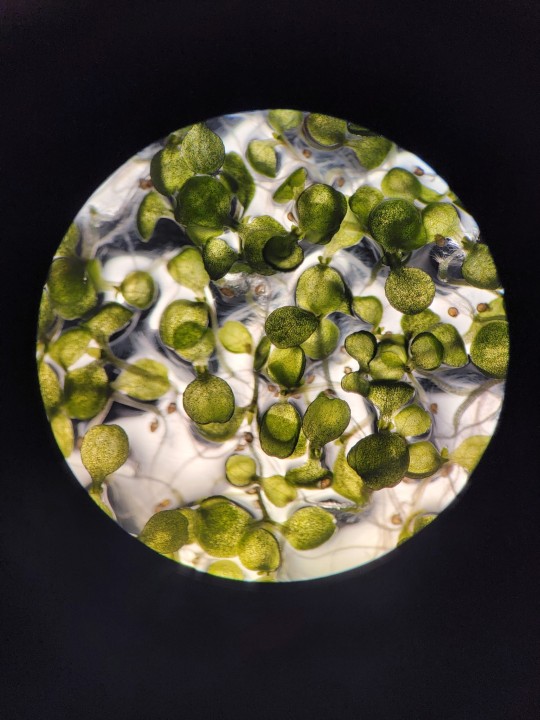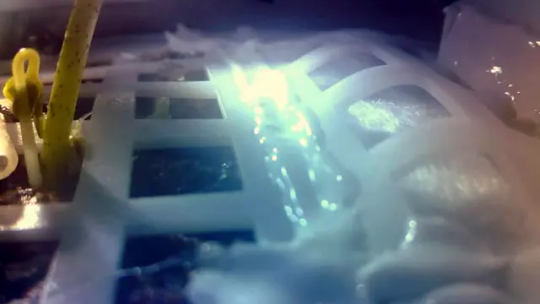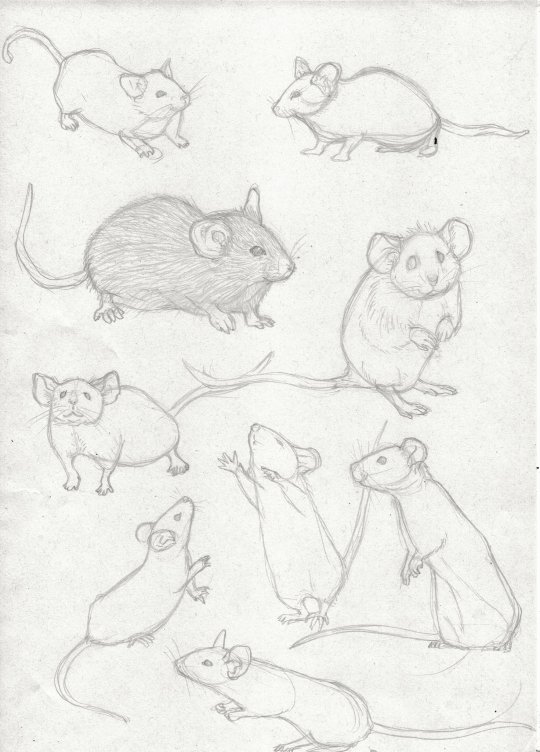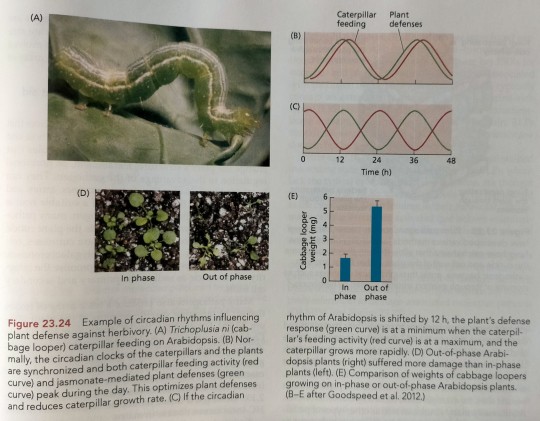#arabidopsis
Text
They talk now: Defensive Arabidopsis thaliana plants could be the future of plant research
A shocking discovery was made today at the Southnorthern University’s Plant Research Center (PRC) that has left the Arabidopsis research community speechless.
“They can talk now!” said one graduate student, running through the halls in terror. “Oh god,what have I done!”
In a dark corner on the first floor of the PRC, a grad student sat, working on their thesis.
“We were using breeding techniques to isolate plants with high levels of defense against insects,” they said. The student has asked to remain anonymous. “Apparently we did too good of a job.”
They started with plants with high levels of defense, and bred them with their wild-type counterparts. They then looked at the offspring to find plants with specific defense traits.
“There was one that stood out to me as strange,” the student remarked. “I decided to grow it, see what happened.”
What happened was beyond their imagination.
“It… it got defensive! It started speaking to me, calling me all sorts of names, like a dumb-”
We at Fake Plant News Media cannot publish some of the profanities uttered by the mutant plant.
“And then it was like, ‘who are you calling a mutant, with your receding hair line and inbred features only a sister could love?’ It was awful.”
Who knows where this discovery will lead. Could talking plants be the future of agricultural production? Will we have to stop experimenting on them, now that they’re sentient? Can I have one to give to my mother-in-law so she can feel what it’s like to talk to herself? These questions and more the graduate student’s next steps in this line of research.
“Well, I don’t know about the mother-in-law thing…”
I’m Ara B. Dopsis, signing off.
4 notes
·
View notes
Text

Arabiposis thaliana seedlings under a microscope. These guys are contamination-free. 🌱
Redbubble / Instagram / Online portfolio
#oliviahathaway#photography#photographers on tumblr#plant#Arabidopsis thaliana#Arabidopsis#seedlings#microscope
2 notes
·
View notes
Text
During cereal endosperm development, the triploid primary endosperm nucleus undergoes a series of mitotic divisions without cytokinesis, and the nuclei migrate to the periphery of the central cell, which also contains a large central vacuole (Figure 21.26, see parts A-D). As in the Arabidopsis coenocyte, each of nuclei is surrounded by radially arranged microtubules (see Figure 21.26E). Anticlinal walls form initially between adjacent nuclei, resulting in the tubelike alveolar cells, with the open end pointing toward the central vacuole (see Figure 21.26F). (...) The innermost layer of daughter cells remains alveolar in structure, and continues to divide periclinally until cellularization is complete (see Figure 21.26G and H). The most important source of starchy endosperm cells is the interior cells of the cell files that are present at the completion of endosperm cellularization (see Figure 21.26H).

"Plant Physiology and Development" int'l 6e - Taiz, L., Zeiger, E., Møller, I.M., Murphy, A.
#book quotes#plant physiology and development#nonfiction#textbook#triploid#endosperm#mitosis#cell division#cell differentiation#plant cells#cytokinesis#vacuole#arabidopsis#coenocyte#microtubule#anticlinal#alveoli#daughter cells
2 notes
·
View notes
Text


How do plants breathe?
These tiny “mouths” in the picture are stomata, the pores on plants’ leaves that allow plants to “breathe”. Plants need to take in carbon dioxide and release oxygen. Stomata facilitate gas exchange in photosynthesis by letting these gasses in and out of the plant tissue. Plants are able to open and close their stomata, which is important since water vapour also escapes via the stomata. Closed stomata help prevent the plant from drying out.
These images are from my undergraduate research project which focused on the molecular signals controlling stomata opening and closing. These picture are the epidermis of Arabidopsis thaliana peeled off and seen under a light microscope.
#katia plant scientist#plant science#plants#plant biology#plant scientist#biology#botany#plant anatomy#microscopy#leaves#arabidopsis#scientific names#science and technology#science communication#undergraduate research#ut austin#biology art#plant aesthetic#plantcore
10 notes
·
View notes
Text
Coltivare piante sulla Luna per la biorigenerazione ambientale

La Cina ha realizzato una piccola fattoria sulla Luna nel 2019. Quali sono stati i risultati? Il 3 gennaio 2019, il lander cinese Chang'e-4 è atterrato sul lato nascosto della Luna e ha inviato il rover Yutu. Ecco tutti i risultati che sono stati conseguiti da quella missione.
Oltre ai suoi numerosi strumenti, il rover, che è atterrato sul lato nascosto della Luna, trasportava un importante esperimento scientifico noto come Biological Experiment Payload (BEP). Nel corso dei successivi otto giorni, questo carico utile condusse un esperimento fondamentale nel quale tentò di far crescere le prime piante sulla Luna.
Il carico comprendeva cotone, patate, arabidopsis e semi di colza, insieme a uova di mosca, lievito e 18 ml di acqua, mantenuta a pressione atmosferica costante.
I risultati di questo esperimento contribuiranno a definire il futuro sistema di supporto vitale biorigenerativo (BLSS), che si rivelerà vitale per gli habitat e le missioni oltre l’orbita terrestre bassa (LEO).
Un team di scienziati cinesi ha pubblicato uno studio che analizza l’esperimento, i suoi risultati e le sue potenziali implicazioni per le future missioni sulla Luna, su Marte e in altri luoghi dello spazio profondo.
Secondo le loro conclusioni, l’esperimento ha dimostrato che le piante possono crescere sulla Luna nonostante l’intensa radiazione, la bassa gravità e una luce intensa e prolungata.
I risultati delle loro analisi sono stati condivisi in due articoli pubblicati rispettivamente il 20 giugno su Microgravity Science and Technology e il 17 ottobre su Ata Astronautica.
Piante nello spazio!
Coltivare piante negli habitat lunari, marziani e spaziali è essenziale per molte ragioni. Oltre a fornire una fonte di nutrimento e a ridurre la necessità di missioni di rifornimento, rimuoveranno anche l’anidride carbonica e forniranno ossigeno fresco, aiuteranno a riciclare i rifiuti e contribuiranno al senso di benessere degli equipaggi.
E mentre i sistemi convenzionali di controllo ambientale e supporto vitale (ECLSS) si basano su componenti meccanici che alla fine si guastano e devono essere sostituiti, un sistema biorigenerativo può rigenerarsi nel tempo.

Una ricostruzione 3D, basata sull'elaborazione delle immagini e sull'analisi dei dati, mostra due foglie di cotone coltivate sul lander Chang'e-4 sul lato nascosto della Luna. Crediti: Università di Chongqing.
Ciò rende la tecnologia BLSS ideale per le missioni nello spazio profondo in cui le opportunità di rifornimento saranno poche e rare. Per anni, gli astronauti hanno condotto esperimenti a bordo della Stazione Spaziale Internazionale (ISS) riguardanti la crescita di piante e alghe, come il Veggie Production System, il Passive Orbital Nutrient Supply System (PONDS), l'Habitat Advanced Plant Habitat (APH) e il Plant Habitat Avionics Real-Time Manager (PHARM).
"La necessità di utilizzare in situ le risorse per la produzione di ossigeno e cibo è particolarmente importante ed è il primo passo verso la creazione di una base per la sopravvivenza, quindi gli esperimenti di piantagione di piante in un ambiente esterno alla Terra sono molto importanti." - Xie Gengxin, professore di ingegneria ambientale all'Università di Chongqing e principale progettista del BEP.
Tuttavia, non è ancora chiaro come l’ambiente naturale dei corpi extraterrestri influenzerà il funzionamento di un BLSS.
Risultati dell'esperimento
Il tempo totale di esecuzione dell’esperimento è stato di nove giorni, invece dei 100 previsti. Ma, come ha indicato Xie, sono state ottenute informazioni preziose. "Sebbene le nostre piante possano crescere nelle condizioni naturali della luce solare e delle radiazioni lunari, la sicurezza di queste piante non è stata valutata.
Per sapere se sono sane o meno, sono necessarie ulteriori ricerche. (...) Il nostro primo biologico Gli esperimenti su Moon for Humanity dimostrano che è possibile costruire un ecosistema rigenerativo sulla Luna per stabilire una base umana." ha dichiarato Xie.
Future missioni e obiettivi
In meno di due anni, la NASA prevede di portare gli astronauti sulla Luna per la prima volta dall’era Apollo. La Cina spera di fare lo stesso, inviando i primi taikonauti nella regione polare meridionale della Luna entro il 2030.
Gli obiettivi a lungo termine di queste e di altre agenzie – come ESA, Roscosmos e l’Indian Space Research Organization (ISRO) – non sono altro che la creazione di un avamposto umano permanente sulla Luna che consentirebbe la ricerca, l’esplorazione, la cooperazione internazionale e lo spazio profondo.
Un aspetto chiave di questo progetto sarà l’utilizzo delle risorse locali per soddisfare le esigenze degli equipaggi. Uno dei modi migliori per garantire una fornitura costante di cibo, aria respirabile e la salute (fisica e mentale) dell'equipaggio è costruire habitat che possano ospitare serre ed esperimenti sulle piante.
In breve, gli astronauti devono portare con sé elementi della biosfera terrestre per vivere, lavorare e prosperare in ambienti extraterrestri. Le lezioni tratte da questa indagine contribuiranno a spianare la strada a tutti coloro che seguiranno.
Read the full article
#ambientiextraterrestri#Arabidopsis#ariarespirabile#BiologicalExperimentPayload#BLSS#Chang'e-4#crescitapiante#landercinese#LUNA#semidicolza#uovadimosca
0 notes
Text
In Arabidopsis, for example, older leaves senesce much more rapidly in response to JA than do younger leaves.
"Plant Physiology and Development" int'l 6e - Taiz, L., Zeiger, E., Møller, I.M., Murphy, A.
#book quote#plant physiology and development#nonfiction#textbook#arabidopsis#leaves#senescence#ja#jasmonic acid
0 notes
Text




More stuff from 2019
Bastión de los Pescadores, Budapest, Hungary
mus musculus, drosophila melanogaster and arabidopsis thaliana sketches
#my art#swallow art#budapest#bastion de los pescadores#hungary#ink#postal#art#artwork#sketch#pencil sketch#watercolor#mus musculus#drosophila#drosophila melanogaster#arabidopsis#arabidopsis thaliana#sci art#scientific art#acientific illustration
1 note
·
View note
Text
Ay Toprağında Bitki Yetiştirmek Mümkün mü?

Ayda Bitki Yetiştirmek
12 Mayıs 2022 tarihinde bugünden sayacak olursak neredeyse 1 ay önce Profesör Rob Ferl ve Profesör Anna-Lisa Paul bir deney gerçekleştirdi ve hesaplamaları doğrultusunda deney beklendiği şekilde başarıyla sonuçlandı. Bu deney ay toprağında bitki yetiştirmekti. İlk kez dünya dışı toprakta bitki yetiştirildi. Ay toprağında bitki yetiştirmek artık mümkün bunu biliyoruz, peki bunu neden ve nasıl yaptılar?
Deneyin asıl amacı Ay’ı gelecekte bir rampa olarak kullanma gayesinde yatıyor aslında. Gelecekte bilim insanları Ay’ı bir uzay üssü veya merkez olarak kullanma amacıyla bu deneyi gerçekleşti. Apollo 11, 12 ve 17 uçuşlarından elde edilen ay toprağında diğer adıyla ay tozunda Arabidopsis(Fare Kulağı Teresi) adı verilen bitki ekildi. Gerekli sulama, enerji ve ışık altında bitki çimlendi. Arabidopsis bilim insanları tarafından tüm DNA’sı haritalandığından bu tarz deneylerde kullanılan standart bir bitkidir.
Ayda toprağında bitki yetiştirmek için, NASA’dan toplamda 12 gram ay toprağı alan Profesör Ferl ve Profesör Paul her kaba toplamda 1 gram olmak üzere toprak yerleştirerek deneyi gerçekleştirdi. Ekildikten 6 gün sonra çimlenen bitki Ay’da bir sera kurma hayallerini yeşertti.
Ayın karanlık yüzü hakkında bilgi edinmek için tıklayın.

Sol taraftaki simülasyonda büyüyen bitkiler, sağ taraftakiler ise ay toprağında gelişen bitkiler
Proje aynı zamanda besin ve oksijen gereksinimi için atılan ilk adımlardan birisidir. Bu deneyin sonuçları bize pek çok diğer çalışmada öncü ve umut olacaktır. Aynı zamanda yapılan bu çalışma Ay Toprağına ekilen herhangi bir bitkinin nasıl tepkime vereceği veya mutasyona uğrayıp uğramayacağı konusuna da parmak basıyor.
Günümüzde, gezegenler arası seyahat etmek oldukça pahalı ve uzun bir süreç fakat gelecekte çok daha basit bir şekilde gelişen teknolojiyle bu değişecektir. Değiştiğinde yapılan bu deney gelecekteki Ay üssü için atılan ilk adım olacaktır şüphesiz. Ay'a yapılacak olan bir merkez üssü bizim uzaydaki seyahatlerimizi ve evreni keşfetmek adına yaptığımız çalışmaları önemli ölçüde etkileyecektir. Aynı zamanda Ay'ın bir besin kaynağı üretim yeri olarak kullanılması bu durumu çok daha üst seviyeye taşıyacaktır.
Kim bilir belki gelecekte sera gazları ve diğer çalışmalar ile Ay'ı yaşanılabilir bir yerde yapabiliriz.
Paul, gözlemlediği üzere ay toprağına ekilen bitkilerin daha yavaş büyüdüğünü ve daha küçük olduğunu gördü. Paul bunun ay toprağında kimyasal tepkimelerin fiziki işaretleri olduğunu söyledi.
Neredeyse 3 yıldır kendilerine “Ay toprağında bitki yetişir mi?” sorusunu soran 2 bilim insanı nihayet sorularının cevabını aldı.
“EVET BÜYÜRLER.”
Kaynak: https://bilimuzay.com/ay-topraginda-bitki-yetistirmek-mumkun-mu/
Read the full article
0 notes
Text
0 notes
Text
More recently, bioluminescence has evolved from laboratory tool to commercial plaything. The Kickstarter-funded, San Francisco-based Glowing Plant Project offers customers DIY kits they can use to genetically engineer a luminous Arabidopsis plant at home. And Carlsbad, California-based BioPop has released what is essentially an illuminated version of that long beloved novelty pet for kids, Sea-Monkeys (which are not in fact tiny aquatic primates, but rather brine shrimp). They call it Dino Pet: a small, vaguely Apatosaurus-shaped aquarium filled with bioluminescent plankton known as dinoflagellates. During the day, the plankton photosynthesize; at night, if you shut off the lights and give the aquarium a good shake, the dinoflagellates light up turquoise, much like the “fiery sparks” Chinese sailors observed in churning seawater so long ago. But the glow is only good for about three shakes a night, and if you’re too rough, you could damage or kill the plankton.
It’s easy to pity those tiny swimming stars trapped in a plastic bubble. Each night, some titan’s hand engulfs their ocean and churns it into a maelstrom for a few moments of selfish delight. Then the monster puts away their entire universe, easy as shutting the lid on a music box. They are kept alive solely for the purpose of this bedside magic trick.
Perhaps, though, we are the more pathetic members of this relationship—the gods bewitched by a gnat. Bottling bioluminescence gives us a sense of ownership over a presumably rare and otherworldly phenomenon; the reality of the situation is quite different. Bioluminescence is so commonplace on our planet—particularly in the oceans—that scientists estimate the thousands of glowing species they have catalogued so far are just a fraction of the sum. It may well be that the vast majority of deep-sea creatures, which live beyond the Sun’s reach, generate their own light (sometimes with the assistance of microbes). They use these innate glows primarily to communicate: to warn and frighten, hide and hunt, lure and beguile. Bioluminescence is one of the oldest and most prevalent languages on Earth—and one that is largely alien to us. Despite our fantasies and mythologies, the truth is that there’s nothing supernatural about living light; it has been a part of nature for eons. It’s just that we were denied this particular gift.
So, with perhaps too little gratitude, we adapted the incomparable talents of glowing creatures for our own purposes. We borrowed their light and it revealed things about our own biology we might never have discovered otherwise. But that is all we can do—borrow. We cannot be them, so we seek them out, and draw them near us—every bit as mesmerized as when we thought the Sun had impregnated the sea. To this day, we cup them in our hands, collect them in jars, and place them on our nightstand, forever trying to satisfy our Promethean hunger.
— The Secret History of Bioluminescence
#ferris jabr#the secret history of bioluminescence#science#biology#microbiology#marine biology#botany#animals#chemistry#physics#commerce#psychology#arabidopsis thaliana#dinoflagellates#bioluminescence#light
190 notes
·
View notes
Text

Work in progress! Can’t wait until it’s ready for the masking tape to come off!
Acrylic on canvas board. It’s fine to practice on, but the boards low quality sometimes feels like I’m fighting my materials 😂
Also I stayed up way too late for this and now I’m very tired
#arabidopsis thaliana#thale cress#wildflowers#art#traditional painting#traditional art#acrylics#acrylic painting#acrylic paint#flowers#nature art
43 notes
·
View notes
Text
This hypothesis was recently confirmed by a study of the interactions between Arabidopsis and cabbage looper (Trichoplusia ni), a generalist lepidopteran herbivore (Figure 23.24A). (...) To test whether the plant circadian clock enhances defense against insect pests, herbivory was compared in Arabidopsis plants whose jasmonate-mediated defense responses were either in phase (Figure 23.24B) or out of phase (Figure 23.24C) with the circadian rhythm of cabbage looper feeding activity. After allowing cabbage loopers to feed freely on the plants for 72 h, plants whose defense responses were in phase with the loopers had visibly less tissue damage than plants whose circadian rhythm was out of phase with that of the insects (Figure 23.24D). As a result, cabbage loopers that fed on the phase-shifted Arabidopsis plants gained three times as much weight over the same period as the synchronized control plants did (Figure 23.24E).

"Plant Physiology and Development" int'l 6e - Taiz, L., Zeiger, E., Møller, I.M., Murphy, A.
#book quotes#plant physiology and development#nonfiction#textbook#arabidopsis#cabbage looper#caterpillar#trichoplusia ni#circadian clock#herbivory#jasmonate#circadian rhythm#insects#in phase#out of phase#synchronized#phase shift
0 notes
Photo

Arabidopsis thaliana flower with pollen tubes growing through the pistil. The flower tissues were chemically cleared to become transparent, while the pollen tubes were stained with aniline blue (yellow fluorescence) in order to be seen.
By Jan Martinek (Czech Republic)
Olympus Image Of The Year Award
#jan martinek#photographer#czech republic#arabidopsis thaliana flower#pollen tubes#pistil#aniline blue#yellow fluorescence#micro photography#nature#olympus image of the year award
36 notes
·
View notes
Text
8 notes
·
View notes
Text
In Arabidopsis, leaf senescence is delayed in knockout mutants of the WRKY53 gene.
"Plant Physiology and Development" int'l 6e - Taiz, L., Zeiger, E., Møller, I.M., Murphy, A.
#book quote#plant physiology and development#nonfiction#textbook#wrky#wrky53#arabidopsis#senescence#leaf senescence#mutants#mutation
0 notes
Text
Guys!!! NASA GREW Arabidopsis thaliana IN LUNAR SOIL!!
THATS ONE SMALL STEP FOR HUMANS, ONE GIANT LEAP FOR YOSHI GETTING HER OWN ARBORETUM ON DS9!!!
#star trek#nasa earth#nasa#nasa artemis#lunar soil#Arabidopsis thaliana#space plants#yoshi O’Brien#Kirayoshi O’Brien#ds9
2 notes
·
View notes